
Journal of Architecture, Planning & Construction Management
Volume 7 Issue 1, 2017
29
Vanishing Heritage: Values of Wooden Minaret Mosque Brezovača
1 Lana Kudumović
1 Faculty of Architecture and Design, Fatih Sultan Mehmet Vakif University,
Istanbul, Turkey
ABSTRACT
Under different local influence, in different part of the world introduced to the faith of Islam, diversity of
architectural forms was produced. After Ottoman took control over Bosnia in 15th century, new religion of Islam
was embraced and followed with construction of the mosques, a symbol of the Islam. Except big central
mosques in urban areas, in each neighbourhood and villages with Muslim population mosques were constructed.
Applying local materials those mosques were adopted to the local environments. In context of Bosnia and
Herzegovina wooden minaret mosques were specifically built in Bosnia, using wood as suitable local material
for construction, while in Herzegovina predominantly stone structures were constructed. Wooden minaret
mosques are more than examples of the local architecture; moreover, they contain local skills in applying
wooden constructions. Yet, there is obvious lack of understanding the values embedded into those structures.
This paper aims to explain values of wooden minaret mosque of Bosnia. Furthermore, case study of Brezovača
mosque located in northern part of the county was elaborated and the aim of this paper was to justify need to
regain original shape and to explain proposed interventions relaying on similar structure from the close vicinity.
This approach was accepted due to lack of source that would confirm exact information about this building.
To meet such aims, this research was focused on two points; 1) to introduction of the local wooden minaret
mosques values, expressed more as intangible values inbuilt in the structure. In addition, setting of the structure
and its integration with natural surroundings is highlighted; 2) to study the limited available sources about
selected case study of Brezovača mosque, and brief introduction to the current condition of the mosque. In the
end, referring to the preserved examples from the surrounding, interventions to regain original shape of the
mosque are proposed, and method of analogy is suggested as appropriate one.
Keywords: wooden minaret, mosque, vanishing heritage, Bosnia and Herzegovina
INTRODUCTION
Spreading of Islam in different areas (areas conquered by the Arabs, in referring to the
very beginning of spreading Islam), different types of building in different styles and manner
were constructed. Locally-found architectural elements were adopted to the need of new life
conditions. They will be used as a model for Islamic architecture diversity according to the
region. Distinguished spaces of the built environment with elements specific to a particular
region were created over time. Each of these elements carries cultural habits and
characteristics of the region in which they have occurred. In its correlation they have created
a spirit of a place.
After Bosnia became part of the Ottoman Empire, in 1463 during Ottoman conquest
of the Balkan territory toward rest of the Europe, Islam as new religion was fully accepted
and Islamic culture became a part of local culture.
To understand circumstances under which Islamic architecture emerged and
developed inside Bosnia, it is important to link basic principles of Islam with specific local
character. Religion of Islam is based on five basic principles, namely: faith, pray, Hajj,
fasting and zakat. Affiliation to the Islam represents commitment and acceptance of the
lifestyle following certain principles. Redžić (1983) explained that the basis of Islam is
contained in the notion of God as the purest spirit. He stated that Islam is monotheism in its
purest form, a simple and easily understandable. The basics of Islam are integrated in a holy
book The Quran and for all Muslims it is common to learn the Quran in Arabic language.
That would be base for development of common Islamic culture, and Quran was bridging

Journal of Architecture, Planning & Construction Management
Volume 7 Issue 1, 2017
30
factor in Islamic culture. Islam also contains specific rules and some of them have had
influence on expression in the art e.g. absence of human figures. These rules were initiation
for development of decorative art, art of ornamentation, poetry and writing. This was
reflected in other types of art including the architecture.
The mosque is a core of Islamic architecture and it represents as a symbol of the faith.
The initial mosque was a place of gathering believers or community and mosques were more
than just a place of worship and pray it was usually a center, a meeting point, a place of
discussion and exchange of information. In its essence mosque represent common prayer
space as a form of the house, with simple interior without the sanctity and the altar. Within its
simplicity mosques contains symbolic elements dome, minaret, mihrab and minbar among
others.
Accepted and preserved as one of the major religion in the country, as it is the case
today, Islam was not understood simply as belonging to the one of the main monotheistic
religion, but rather perceived as tradition and custom. Acceptance of new culture was
accompanied with socio-economic changes and new life principles, reflected into different
aspects of life. Karić (2011) stated that Islam in the Balkans is an extremely complex
phenomenon and needs to be viewed within the context of religious, cultural, political,
economic and military factors.
Answering how Islamic culture was reflected to different sphere of the life inside
Bosnia will determine principles of for that time newly occurred achievement in architecture.
Numerous public buildings with Islamic character were constructed all over the country, after
Ottoman administration was established. Islamic character of public buildings was already
known for Ottomans in pre Ottoman Anatolia, while on the soil of Bosnian those buildings
were innovative. Intermingling of tradition and local character with Islamic culture resulted
in a variety of Islamic buildings and richness of the architectural forms, in creating variety of
shapes, forms and volumes.
Integrating tangible and intangible values many valuable assets, tows and structures
will become specificum of the country, expressing relation of the man and environment.
Certain characteristics of the space were gained as reflection of habits and customs of people
and their activities. Those activities included application of local material and skills in
applying material, with difference of Bosnia where it was mostly wood while in Herzegovina
it was stone. "The monuments represent great value of every city, they incorporate memory
of the places and the message to its inhabitants with significant cultural interpretations of the
space and shape of traditions, as solid background of national identity." (Salihović,2002
pg.260)
According to the physical and structural characteristics of the monuments Ottoman
architecture of Bosnia and Herzegovina can be divided into several groups: the mosque and
tomb, public baths (hammam), madrasas and caravanserai, covered markets, shadrvans and
fountains, shops and storerooms, fortified towns, bridges. Each of these monuments reflects
certain peculiarities, and they can be found in all parts of Bosnia and Herzegovina, as a
legacy of Ottoman architecture, which is directly related to Islamic culture.
Among important particularities of the Islamic architecture is harmonization with the
environment. The specificity of the Ottoman period is also depicted in the principle of
forming the houses that reflected characteristics of the area in which they were form.
Following definition of Norberg-Schulz (1975) that architectural space is considered
primarily as a concretization of man's existential space, as result of interaction of the man and
environment, this attitude could be recognized in the traditional urban settings established by
the Ottomans. Houses were adopted to the morphology of the terrain and to the climatic
conditions. Bosnian traditional houses were constructed creating architectural space in the
human scale and for the people. Similar concept was applied for the the design of mosques as

Journal of Architecture, Planning & Construction Management
Volume 7 Issue 1, 2017
31
well, mostly local neighbourhood mosques, reflecting the local character. Absence of an
explicit distinction between the sacral and the profane caused a similarity in a construction.
According to Bećirbegović (1990) since 15th century inside Bosnia two types of
mosques were built: with domes and with hipped roof that could have stone or wooden
minaret. Even thou wooden minarets mosques were most common type of mosque still
researches were not focused on this type of mosques. However, mosques in Bosnia and
Herzegovina were subject of changes, destruction and deterioration due to different causes.
Selected case study for this paper is wooden minaret mosque Brezovača, located in the
village Ribnica, in northern part of Bosnia. The goal of this paper is to define values of this
quite simple structure, and to determine appropriate approach to preserve this kind of
structures of further neglecting attitude.
The mosque was documented and inspected in situ in order to determine the current
state of conservation, especially of the characteristic elements, including open porch, roof and
minaret. Since the mosque is still actively in use, it gives potential to consider as worth of
being preserve. The occurred changes have destroyed some valuable part of the mosque such
as porch that should be replaced with new one relaying on the available data and relaying on
examination of similar examples dating from the same period and being placed in the same
part of the country. Due to the lack of recent accurate research about this and other similar
mosques, for the purpose of this research, in order to confirm initial shape of the mosque,
interviews with the oldest inhabitants and available photo documents were taken into account
as well.
WOODEN MINARETS MOSQUES
Inside Bosnia and Herzegovina there was 1,120 mosques among which 70% were
mosques with wooden minarets. (Bećirbegović, 1990). However, it is important to indicate
gap in research, analyses and statistical data related to this type of mosques, as well as about
current condition and restoration interventions. The most accurate research focusing on the
wooden minaret mosque is summarized in book Mosques with wooden minaret in Bosnia and
Herzegovina by Bećirbegović (1990), while there is no deep research conducted after the war
(1992-95) when many of cultural heritage monuments including mosques were totally
destroyed, with obvious decreased number of preserved mosques.
Mosques with wooden minarets are related to the Bosnia as the most commonly
applied type since the Ottoman conquest. Those mosques were constructed as endowment of
different founders, mostly citizens themselves. The wood was available material and this
construction type is specific itself done by local masters. Form of the wooden minaret
mosques emerged from the traditional architecture as a simple cube with hipped roof. In a
picturesque landscape of Bosnian inhabited area mosques were part of its cultural landscape.
The principles under which neighbourhoods emerged refers to the several aspects: to follow
the terrain morphology, to use in situ materials, to respect human scale, and to preserve vistas
and to provide enough sun for each house. The mosques with wooden minarets were
perfectly incorporated into this approach.
Most of these mosques are single space with few examples of space with columns.
They might vary in size and inner space organization. Basic concept of this mosque included
porch that was covered and supported with columns. The entrance to the mosque was set in
the middle of the porch. Both sides of the porch were used as sofa or praying space outside
the mosque. Interior is quite simple and includes basic elements such as mihrab, mimber, curs
and mahafil. Inside Bosnia this type of mosque evolved into different concept according to
the material and position of its elements.

Journal of Architecture, Planning & Construction Management
Volume 7 Issue 1, 2017
32
Under different socio economic circumstances, different approaches in perceiving
values impacted built environment. Many of wooden minaret mosques have been changed
over time, replacing them with new one or some of its part, replacing wooden minaret with
masonry one or they have vanished due to lack of maintenance, or else due to inappropriate
rehabilitation or they have been destroyed during war 1992-95.
BREZOVAČA MOSQUE - HISTORY OF THE PLACE
Brezovača Mosque is located in the village Ribnica between towns Zavidovići and
Banovići. During Ottoman time this area belonged to different nahi (Maglaj and Dramešin).
There is lack of written data about this area in the first years under the Ottomans. This area
was far from any bigger center and it might be assumed also that this area was unsecure due
to fact that the closest fortress was Bobovac (quite far from the village). End of XVI and
beginning of XVII century Vlahs inhabited this area and they have constructed monastery
(During 18th century monastery was abounded and destroyed and in 1859 church was
constructed on its foundation).
Increased number of Muslim population was followed with increased number of
constructed mosques. Defter documents related to this area contain information about Muslim
inhabitants but there is no mentioning of the mosques. (Alihodžić, 2010). Today’s the oldest
preserved mosque in this area is mosque Brezovača dating back to 1890. Also around 1850,
two other mosques were constructed in the vicinity of this location, in villages Slivići and
Gare.
First accurate information about mosques in this area are related to Austro Hungarian
(AU) maps from 1882, prepared immediately after Bosnia came under AU control. Those
maps showed eight mosques in surrounding villages of this area, including Brezovača
mosque. Accordingly, one can assume that mosques were existing during late Ottoman
period. In local narratives it is mentioned that the oldest mosque in this area was constructed
in 1850. Also, inventory of religious building conducted in 1895 includes Brezovača mosque.
(Mujkić, 1999)
In Defter documents from 1565 and from 1604, Municipality of Zavidovići, to which
village Ribnica had belonged for years, was mentioned as village of Zavidovići. Author
Mujkić found that several other villages from the surrounding were detected in defter from
1604, while names of some other villages couldn’t be certainly distinguished as current
names of villages. (Mujkić, 1999)
According to the census done in the 1879 (first out of 4 census done by Austro
Hungarian administration) village Ribnica had 380 inhabitants out of which 307 were
Muslims. The number of inhabitants was increased to 1392 in 1910, out of which 986 were
Muslims. (Mujkić, 1999)
Today Ribnica belong to Municipality of Banovići, the town that emerged as an
outcome of coal mine development and youth actions after 1949, during period of ex-
Yugoslavia. After village was divided among two municipalities, according to census from
1991 (last census before the war 92/95) population of the village Ribnica was 2328, out of
which 1627 were Bošnjaks (Muslims). In 2013 (first census after the war) number of
population in village Ribnica (Zavidovići) is 1095 and together with part that belongs to
Banovići municipality (villages Ćatići 361 and Mrgan 278) population is 1734 inhabitants.
Today mostly Bosnjaks live in this area that gravitate to this mosque as major religious
building. Recently in close vicinity of this village, new domed mosque was contracted
applying new trend and style unknowns to this area.

Journal of Architecture, Planning & Construction Management
Volume 7 Issue 1, 2017
33
SITE The mosque Brezovača is set on the plateau above river Ribnica, a tributary of the
river Krivaja, in the area between two Municipalities Zavidovići and Banovići. A Steal
Bridge is crossing river and connects the site to the main local road toward valley of the river
Krivaja. The site of the mosque is surrounded with the greenery and forest, while village is
set on the hill starting from the other site of the gravel road as main approaching road toward
mosque.
BUILDING DESCRIPTION
Small, in dimension of 11,5m x 7,5m, Brezovača mosque once was consisted of two
parts: entrance porch and main praying space. Currently porch is closed with masonry walls.
Inside porch there is inbuilt chimney for purpose of heating mosques during winter time.
Structural particularities of the Brezovača mosque were achieved using local materials,
including usage of stone for walls, and wood for roof, minaret and mahfil. Corpus of the
mosque is built in stone with thickness of the wall 66-75cm. Walls are plastered and stone is
not visible on the facade. There are 6 small windows on the façade and 2 more windows in
the front part (old porch). Main door is simply shaped. From the entrance part, old arched
opening is leading to the main praying hall. Inside the hall there are main interior elements of
the mosque, simple in shape and with no specific decoration. All elements are made of wood.
Mahfil is set across the mihrab along the entrance wall. Mahfil set on the upper gallery,
covers almost half of the ground plan.
Fig.1: Brezovača mosque around 1975/80 (left) and today (right)
(Source: Nuraga Softić)
Mosque is covered with pitched roof maid of wooden beams, covering both, porch
and main praying hall. Currently clay roof tiles are used as roof covering, while originally
for the roof covering was used wooden shingle as it was commonly used in Bosnia. Base
of minaret is placed in the roof and total height of the minaret is around 16 m from the
terrain and 8 m from the peak of the roof. Minaret is maid of wooden skeleton with spiral
stairs that is toward top enlarged into balcony (serefe). Minaret cuts the surface of the
roof and it is fixed for the roof construction in the place of section point of roof and
minaret. Gallery of the minaret is covered with small openings. Today minaret is
completely covered with sheet metal.

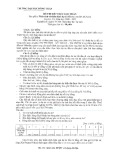
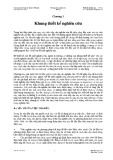
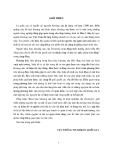
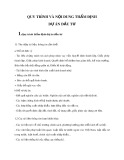
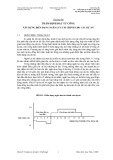
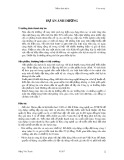
![Thanh tra kiểm tra: Bài soạn [chuẩn nhất/mới nhất]](https://cdn.tailieu.vn/images/document/thumbnail/2017/20170304/trungthien196/135x160/330284761.jpg)
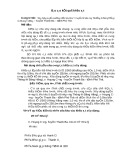










![20 câu hỏi Quản lý dự án phần mềm có đáp án [mới nhất]](https://cdn.tailieu.vn/images/document/thumbnail/2025/20251003/hieu2004haha@gmail.com/135x160/78791759734259.jpg)


![Tài liệu Quản lý dự án: Kiến thức nền tảng toàn diện [chuẩn SEO]](https://cdn.tailieu.vn/images/document/thumbnail/2025/20250910/kimphuong1001/135x160/92631757496585.jpg)



